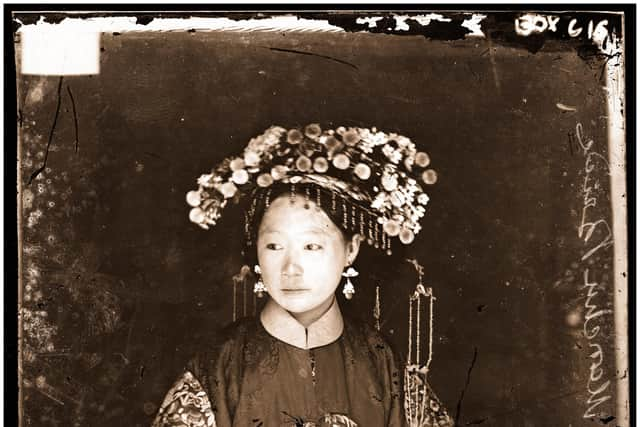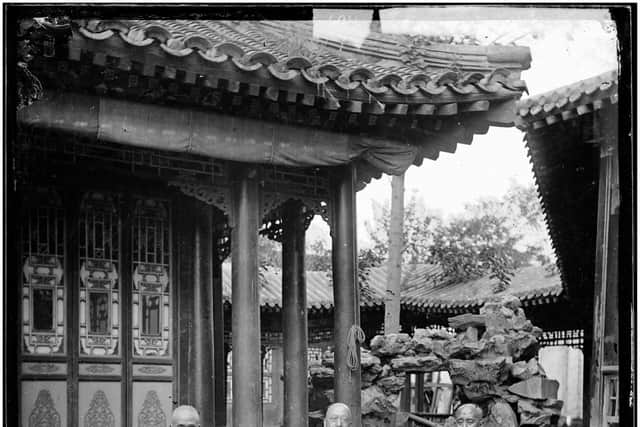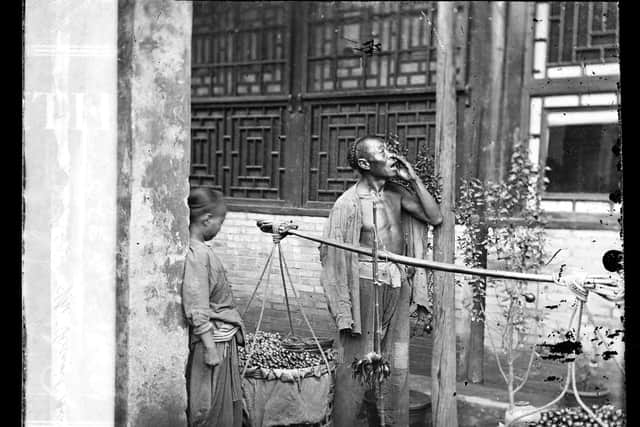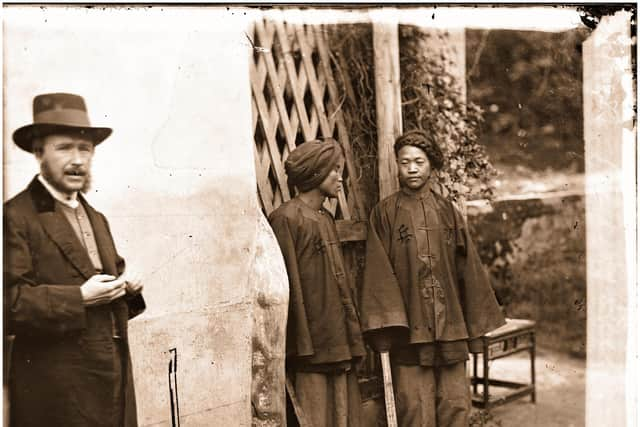Edinburgh photographer who brought Far East to the world remembered on centenary
and live on Freeview channel 276
Now the life and work of the Edinburgh-born photographer and traveller has been celebrated on the centenary of his death with a plaque installed at his childhood home in Brighton Street in the Old Town, where he was raised by his tobacconist father.
Thomson left Edinburgh in 1862 for Singapore, before venturing deep into China, Cambodia and present-day Thailand to record people and places seldom seen, with a camera measuring one-metre cubed and a tepee-style darkroom strapped to his back.
Advertisement
Hide AdAdvertisement
Hide Ad

The sight of a Westerner with a giant camera – both which most had never seen before – caused some alarm in parts rarely visited by outsiders.
Betty Yao, of the John Thomson Centenary Commemoration Group, said: “Thomson was very human, very personable and he didn’t speak Chinese, but he managed to develop this relationship with the sitter with this universal story.
"He respected the sitter. It didn’t matter if it was the King of Siam or a street trader, he connected with them. You can see that in their eyes.
"He had an open mind and was sensitive to the lives and surroundings of his subjects.”
Advertisement
Hide AdAdvertisement
Hide Ad

An exhibition of Thomson’s work in China, which has travelled the world, has now arrived in Edinburgh. It will go on show at Heriot- Watt University where, in its very early days, Thomson studied at night school in the 1850s.
His interest in photography intensified as the art of photography developed at a rapid rate in the capital, with figures such as David Octavius Hill and Robert Adamson at the forefront of new innovation.
“Edinburgh was then at the centre of the development of photography, it was like a Silicon Valley of its time,” Ms Yao added.
Thomson left in 1862 and set up a studio in Singapore.


What followed was an unparalleled body of work of a part of the world usually just captured on a small scale by missionaries, civil servants and traders. His is considered one of the pioneers of photojournalism as a result.
Advertisement
Hide AdAdvertisement
Hide AdTours of Malaya, Sumatra and present-day Sri Lanka followed and, in 1865, he arrived in now Thailand to photograph King Mongkut of Siam and his government several times.
A gruelling expedition to Cambodia followed, where his mission to photograph the Angkor Wat ruins ended in malaria, which left him temporarily unable to walk.
While he captured riches, he also recorded despair as rapid population growth in China put pressure on food supplies and led to hard poverty, particularly in rural areas.


Thomson’s images include a series on foundling hospitals in Fukien, where families sold their babies – and girls fetched a far lower price than boys.
Advertisement
Hide AdAdvertisement
Hide AdThomson worked in the collodion technique, where a glass plate is coated in chemicals and exposed to the camera, before being covered in another acid mix.
The kit required for his images – as well as the terrain he navigated – made Thomson’s work hard fought, but photography was the true ally of the traveller given the “perfect mimicry of the scene presented, and an enduring evidence of work faithfully performed”, he wrote.
China Through the Lens of John Thomson is on at James Watt Centre, Heriot-Watt University until March 25, 2022.
A message from the Editor:Thank you for reading this article. We're more reliant on your support than ever as the shift in consumer habits brought about by Coronavirus impacts our advertisers.
If you haven't already, please consider supporting our trusted, fact-checked journalism by taking out a digital subscription.
Comment Guidelines
National World encourages reader discussion on our stories. User feedback, insights and back-and-forth exchanges add a rich layer of context to reporting. Please review our Community Guidelines before commenting.
